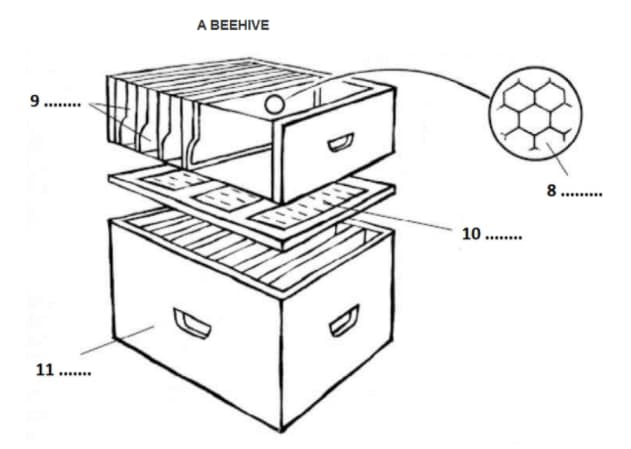محتوای الکترونیکی
Diagram Completion IELTS Reading

Sample Reading Passage:
By the early nineteenth century – the start of the railway age – men such as John McAdam and Thomas Telford had created a British road network totalling some 200,000 km, of which about one sixth was privately owned toll roads called turnpikes. In the first half of the nineteenth century, many roads in the US were built to the new standards, of which the National Pike from West Virginia to Illinois was perhaps the most notable. In the twentieth century, the ever-increasing use of motor vehicles threatened to break up roads built to nineteenth-century standards, so new techniques had to be developed.On routes with heavy traffic, flexible pavements were replaced by rigid pavements, in which the top layer was concrete, 15 to 30 centimetres thick, laid on a prepared bed. Nowadays steel bars are laid within the concrete. This not only restrains shrinkage during setting, but also reduces expansion in warm weather. As a result, it is, possible to lay long slabs without danger of cracking |
Questions:
Complete the table below.
Use ONE WORD ONLY from the passage for each answer.
| Time period | Type of roads |
| Early 19th century | Turn pikes also called as 1……… roads |
| First half of the 2………………. century | National Pike |
| 20th century | flexible pavements were replaced by 3………….. pavements |
| Now | 4……… bars are laid within the concrete |
Answers:
| Time period | Type of roads |
| Early 19th century | Turn pikes also called as 1. toll roads |
| First half of the 2. nineteenth century | National Pike |
| 20th century | flexible pavements were replaced by 3.rigid pavements |
| Now | 4.steel bars are laid within the concrete |
Explanation:
| For the first question, we find the answer in the first line which says “By the early nineteenth century – the start of the railway age – men such as John McAdam and Thomas Telford had created a British road network totalling some 200,000 km, of which about one sixth was privately owned toll roads called turnpikes”. So the answer is “Toll”. For the second question, we find the answer in the second line which says “In the first half of the nineteenth century, many roads in the US were built to the new standards, of which the National Pike from West Virginia to Illinois was perhaps the most notable”. So the answer is “nineteenth”. For the third question, we find the answer in the fourth line which says “On routes with heavy traffic, flexible pavements were replaced by rigid pavements”. So the answer is “rigid”. For the fourth question. We find the answer in the fifth line which says “Nowadays steel bars are laid within the concrete”. So the answer is “steel”. |
Summary/Notes completion:
Sample reading passage:
| Seaweeds are algae that live in the sea or in brackish water. Scientists often call them ‘benthic marine algae’, which just means ‘attached algae that live in the sea’. Seaweeds come in three basic colors: red, green, and brown: dulse is the red seaweed; sea lettuce is amongst the green algae, and the brown is a wrack. Red and brown algae are almost exclusively marine, whilst green algae are also common in freshwater and in terrestrial situations. Many of these algae are very ancient organisms, and although lumped together as ‘algae’ are not actually closely related, having representatives in four of the five kingdoms of organisms. There are about 10,500 species of seaweeds, of which 6,500 are red algae (Rhodophyta). The trend today is to refer to marine algae used as food as ‘sea-vegetables’. The main species used in Ireland at present are dulse, carrageen moss, and various kelps and wracks. Dulse – also known as dillisk in a number of areas – is a red alga that is eaten on both sides of the North Atlantic. |
Questions:
Complete the summary/notes below:
Choose ONE WORD ONLY from the passage for each answer
| 1……………………….are algae that live in the sea or in brackish water. They come in 2……………… basic colours: red, green, and brown.Red and brown algae are almost exclusively 3……………….., whilst green algae are also common in freshwater and in 4………………. situations. |
Answers:
| 1.Seaweeds are algae that live in the sea or in brackish water. They come in 2.three basic colours: red, green, and brown. Red and brown algae are almost exclusively 3.marine whilst green algae are also common in freshwater and in 4.terrestrial situations. |
Explanation:
| For the first question, we find the answer in the first line which says “Seaweeds are algae that live in the sea or in brackish water.” So the answer is “seaweeds” For the second question, we find the answer in the third line which says “Seaweeds come in three basic colors”. So the answer is “three”. For the third question, we find the answer in the fourth line which says “Red and brown algae are almost exclusively marine”. So the answer is “marine”. For the fourth question, we find the answer in the fourth line which says “green algae are also common in freshwater and in terrestrial situations”. So the answer is “terrestrial”. |
Diagram completion:
Sample reading passage:
| In their new location, the beekeeper will pay the farmer to allow his bees to feed in such places as orange groves. The honey produced here is fragrant and sweet and can be sold by the beekeepers. To encourage the bees to produce as much honey as possible during this period, the beekeepers open the hives and stack extra boxes called supers on top. These temporary hive extensions contain frames of empty comb for the bees to fill with honey. In the brood chamber below, the bees will stash honey to eat later. To prevent the queen from crawling up to the top and laying eggs, a screen can be inserted between the brood chamber and the supers. Three weeks later the honey can be gathered. |
Label the diagram below.
Choose ONE OR TWO WORDS from the passage for each answer.
Questions:
| 8…………………………. 9…………………………. 10……………………….. 11……………………….. |
Answers:
| 8. comb 9. Frames 10. screen 11. Brood chamber |
Explanation:
| For the first question, we find the answer in the third and fourth line which says “the beekeepers open the hives and stack extra boxes called supers on top. These temporary hive extensions contain frames of empty comb for the bees to fill with honey.” So the answer is “Comb”. For the second question, we find the answer in the third and fourth line which says “These temporary hive extensions contain frames of empty comb for the bees to fill with honey.” So the answer is “frames”. For the third question, we find the answer in the sixth line which says “To prevent the queen from crawling up to the top and laying eggs, a screen can be inserted between the brood chamber and the supers.” So the answer is “screen”. For the fourth question, we find the answer in the sixth line which says “To prevent the queen from crawling up to the top and laying eggs, a screen can be inserted between the brood chamber and the supers.” So the answer is “brood chamber”. |
بهترین ها
| نام | تعداد آزمون | میزان موفقیت | |
|---|---|---|---|
| َAmeneh Darvishzadeh | 1 | 100/00 % | |
| Mehrad Hashemi | 1 | 100/00 % | |
| مهدی حسین پور آقائی | 1 | 100/00 % | |
| Farnoush Toghiany | 21 | 98/36 % | |
| zahra namdari | 46 | 98/21 % | |
| یاسمن محمدی پور | 4 | 98/08 % | |
| Sheida Taheri | 3 | 97/37 % | |
| پژمان همدانی | 3 | 97/37 % | |
| محمدحسین میرزایی | 3 | 97/30 % | |
| Tara Mohammadi | 3 | 96/43 % | |
| yasaman mohamadipur | 51 | 95/86 % | |
| محمدجواد ملائی اردستانی | 3 | 94/44 % | |
| Arzhang Saberi | 4 | 93/33 % | |
| Soheila Karimi | 124 | 92/73 % | |
| aram farhmand | 10 | 92/31 % | |
| یاشار اسکندری | 98 | 91/14 % | |
| الشان مقیمی آذر | 11 | 90/80 % | |
| عباس پورمیدانی | 1 | 90/00 % | |
| پریسا سلوکی شهرضایی | 72 | 89/49 % | |
| ارشیا قلمکاری | 33 | 89/23 % |

